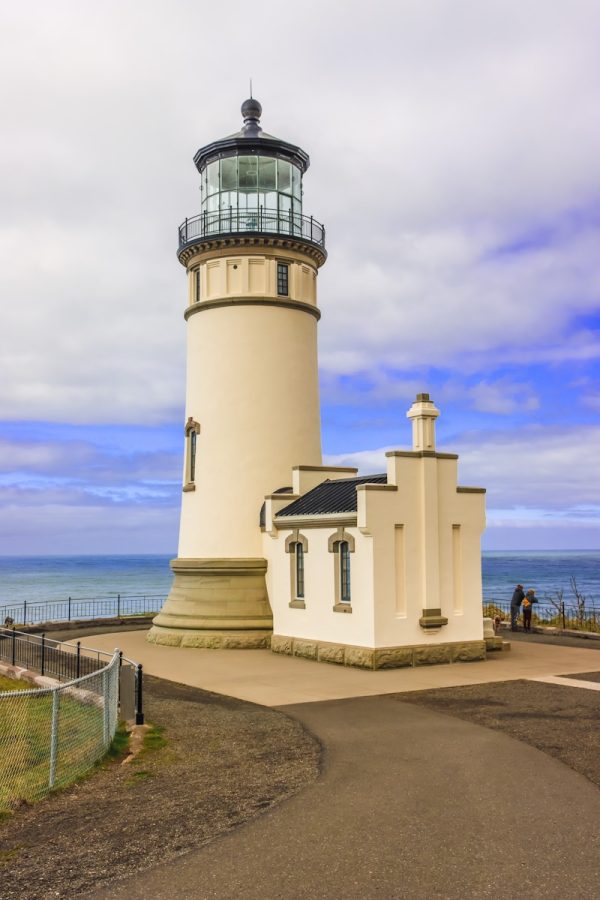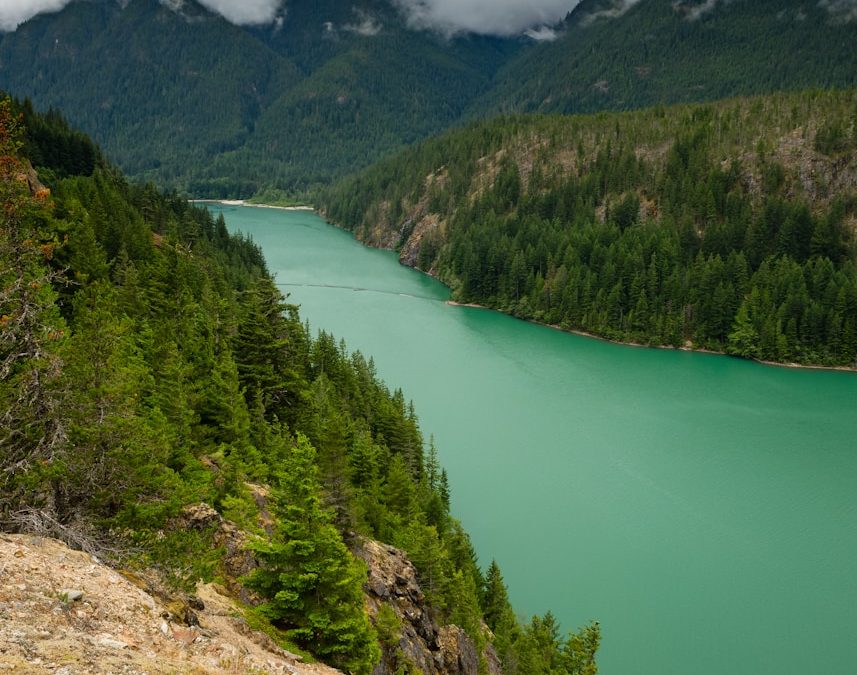Cape Disappointment is a well-known location in the Pacific Northwest, located on the Long Beach Peninsula in Washington State. The cape is situated where the Columbia River meets the Pacific Ocean, and it is a place of historical significance, natural beauty, and recreational opportunities.

The area was first explored by Spanish explorer Bruno de Heceta in 1775, and it was later named Cape Disappointment by English Captain John Meares in 1788. The name was given due to the challenges and dangers faced by early explorers in navigating the treacherous waters of the Columbia River Bar. Today, Cape Disappointment is a popular destination for tourists and locals alike, offering a range of activities and attractions.
Visitors to Cape Disappointment can explore the Lewis and Clark Interpretive Center, which features exhibits and displays about the famous expedition that passed through the area in 1805. The park also offers hiking trails, beaches, and stunning views of the ocean and river. Whether you’re interested in history, nature, or outdoor recreation, Cape Disappointment has something to offer.
Geographical Overview

Location
Cape Disappointment is located at the southwesternmost point of Washington State, on the Long Beach Peninsula. It is situated at the confluence of the Pacific Ocean and the Columbia River, which forms the border between Oregon and Washington. The cape is part of the Lewis and Clark National Historical Park and is managed by the Cape Disappointment State Park.
Topography
Cape Disappointment is a rugged and scenic area with a diverse topography. The cape is characterized by steep cliffs that rise up to 200 feet above sea level, and rocky outcroppings that jut out into the ocean. The area is also home to several beaches, including Waikiki Beach and Dead Man’s Cove. The terrain is dominated by dense forests of Sitka spruce, western hemlock, and Douglas fir, which provide habitat for a variety of wildlife, including deer, elk, and bald eagles.
Climate
The climate at Cape Disappointment is characterized by mild temperatures, high humidity, and frequent rainfall. The area receives an average of 80 inches of rain per year, with the majority of the precipitation occurring between October and May. The summers are cool and foggy, with temperatures averaging in the mid-60s. The winters are mild but wet, with temperatures averaging in the mid-40s. Visitors should be prepared for changing weather conditions, as the area is known for its sudden and dramatic shifts in weather.
Historical Significance

Lewis and Clark Expedition
Cape Disappointment played a significant role in the Lewis and Clark Expedition, which was the first American expedition to cross the western portion of the United States. On November 14, 1805, the expedition sheltered at Dismal Nitch, which is located near Cape Disappointment. Meriwether Lewis, one of the leaders of the expedition, decided to proceed on by land and find if possible the white people the Indians Say is below and examine if a Bay is Situated near the mouth of this river as laid.
Lighthouse History
Cape Disappointment is also home to one of the oldest lighthouses on the west coast of the United States. The Cape Disappointment Lighthouse was lit in 1856, becoming the eighth active light on the west coast. Today, the inside of the lighthouse is closed to the public, but a short, forested trail from a parking lot leads to a viewpoint overlooking the lighthouse.
Military History
Cape Disappointment has a rich military history. In the late 1800s, the U.S. Army established Fort Canby at Cape Disappointment to protect the entrance to the Columbia River. During World War II, the fort was an important coastal defense installation, and several gun batteries were built to defend against possible attacks from the sea. Today, visitors can explore the fort and learn about its military history at the Lewis and Clark Interpretive Center, which is located on the grounds of the fort.
Overall, Cape Disappointment is a place of great historical significance, and it attracts visitors from all over the world who come to learn about its rich history and explore its natural beauty.
Cape Disappointment State Park
Cape Disappointment State Park is a 2,023-acre park located on the Washington coastline. The park is popular for its beautiful scenery, recreational activities, and conservation efforts.
Recreational Activities
The park offers a variety of recreational activities for visitors. Some of the most popular activities include hiking, camping, fishing, and beachcombing. There are several trails within the park, including the Cape Disappointment Trail, which offers stunning views of the ocean and surrounding landscape. Visitors can also camp at one of the four camping loops (A, B, C, and D) within the park.
Facilities and Amenities
Cape Disappointment State Park offers several facilities and amenities for visitors. The park has picnic areas, restrooms, and showers. There are also several cabins available for rent within the park. In addition, the park has a visitor center where visitors can learn about the park’s history, wildlife, and conservation efforts.
Conservation Efforts
Cape Disappointment State Park is committed to conservation efforts to protect the park’s natural resources. The park has implemented several measures to reduce its carbon footprint, including the installation of solar panels and the use of electric vehicles. In addition, the park has a recycling program and encourages visitors to practice Leave No Trace principles.
Overall, Cape Disappointment State Park is a beautiful and well-maintained park that offers a variety of recreational activities and amenities for visitors. The park’s commitment to conservation efforts ensures that future generations can enjoy the park’s natural beauty.
Cape Disappointment Lighthouse
Cape Disappointment Lighthouse is a historic lighthouse located in Ilwaco, Washington. It was first lit on October 15, 1856, and became the eighth active light on the West Coast. The lighthouse is an important landmark in the area and attracts many visitors each year.
Construction and Design
The lighthouse was designed by Carl Leick and constructed by the United States Army Corps of Engineers. It is a 53-foot tall tower made of brick and mortar, with a cast-iron lantern room and gallery. The original light source was a first-order Fresnel lens, which was later replaced by a fourth-order lens.
Lighthouse Keepers
Over the years, many lighthouse keepers have served at Cape Disappointment Lighthouse. The first keeper was John Bowman, who served from 1856 to 1861. Other keepers included Joseph A. Smith, who served from 1873 to 1901, and George C. Riedel, who served from 1901 to 1936. The keepers were responsible for maintaining the lighthouse and ensuring that the light was always shining brightly.
Modern Use
Today, the lighthouse is no longer in use and is maintained by the United States Coast Guard. It is open to the public and visitors can climb to the top of the tower for a beautiful view of the surrounding area. The lighthouse is also part of the Lewis and Clark National Historical Park, which includes a museum and interpretive center. Visitors can learn about the history of the area and the role that the lighthouse played in maritime navigation.
Cultural Impact
In Literature and Media
Cape Disappointment has been featured in several works of literature and media. In the book “The Columbia River: A Comprehensive Report on the Development of the Water Resources of the Columbia River Basin for Irrigation, Power Production, and Other Beneficial Uses,” published in 1947, the cape is mentioned as a landmark on the Columbia River. It has also been mentioned in various travel guides and brochures.
In popular culture, Cape Disappointment has been featured in movies, TV shows, and video games. It is a location in the video game “Alan Wake,” where the main character visits the lighthouse. The cape is also featured in the TV series “Twin Peaks,” where it is mentioned as a location near the fictional town of Twin Peaks.
Local Legends
Cape Disappointment is steeped in local legends and folklore. One such legend is that of the ghost of a lighthouse keeper who haunts the area. According to the legend, the lighthouse keeper died in a storm while trying to rescue sailors from a shipwreck. Visitors to the area have reported seeing strange lights and hearing unexplained noises.
Another local legend is that of the “Cape Disappointment Monster.” According to the legend, a sea monster lives in the waters off Cape Disappointment and has been known to attack boats and fishermen. While there is no concrete evidence to support the existence of such a creature, the legend has persisted for many years.
Overall, Cape Disappointment’s cultural impact extends beyond its natural beauty and historical significance. Its presence in literature, media, and local legends has cemented its place in the popular imagination.
Visitor Information
Travel Tips
Cape Disappointment is a popular tourist destination, and visitors should plan their trip accordingly. The park is open year-round, and visitors are encouraged to check the weather forecast before their visit. The park is located in the Pacific Northwest, so visitors should be prepared for rain and cooler temperatures. It is recommended that visitors wear comfortable shoes and dress in layers, as the weather can change quickly.
Visitors can access the park by car, and there is ample parking available. The park is also accessible by public transportation, with several bus routes running nearby. Visitors should note that a Discover Pass is required to enter the park.
Best Times to Visit
The best time to visit Cape Disappointment is during the summer months, from June to August. During this time, the weather is generally mild and sunny, making it the perfect time to explore the park’s many hiking trails and beaches. However, visitors should be aware that this is also the busiest time of year, and the park can get crowded.
Visitors looking for a quieter experience should consider visiting during the shoulder seasons of spring and fall. During these times, the crowds are smaller, and the weather is still pleasant. However, visitors should be prepared for cooler temperatures and the possibility of rain.
Safety Considerations
Visitors should be aware of the potential hazards when visiting Cape Disappointment. The park is located on the coast, and visitors should exercise caution when exploring the beaches and cliffs. Visitors should also be aware of the tides, as they can change quickly and create dangerous conditions.
Visitors should also be prepared for the possibility of encountering wildlife, such as bears and cougars. Visitors should keep a safe distance from these animals and should never feed them.
Finally, visitors should be aware of the park’s rules and regulations. Visitors should stay on designated trails and should not disturb the park’s natural resources. Visitors should also pack out all trash and leave the park as they found it.





0 Comments